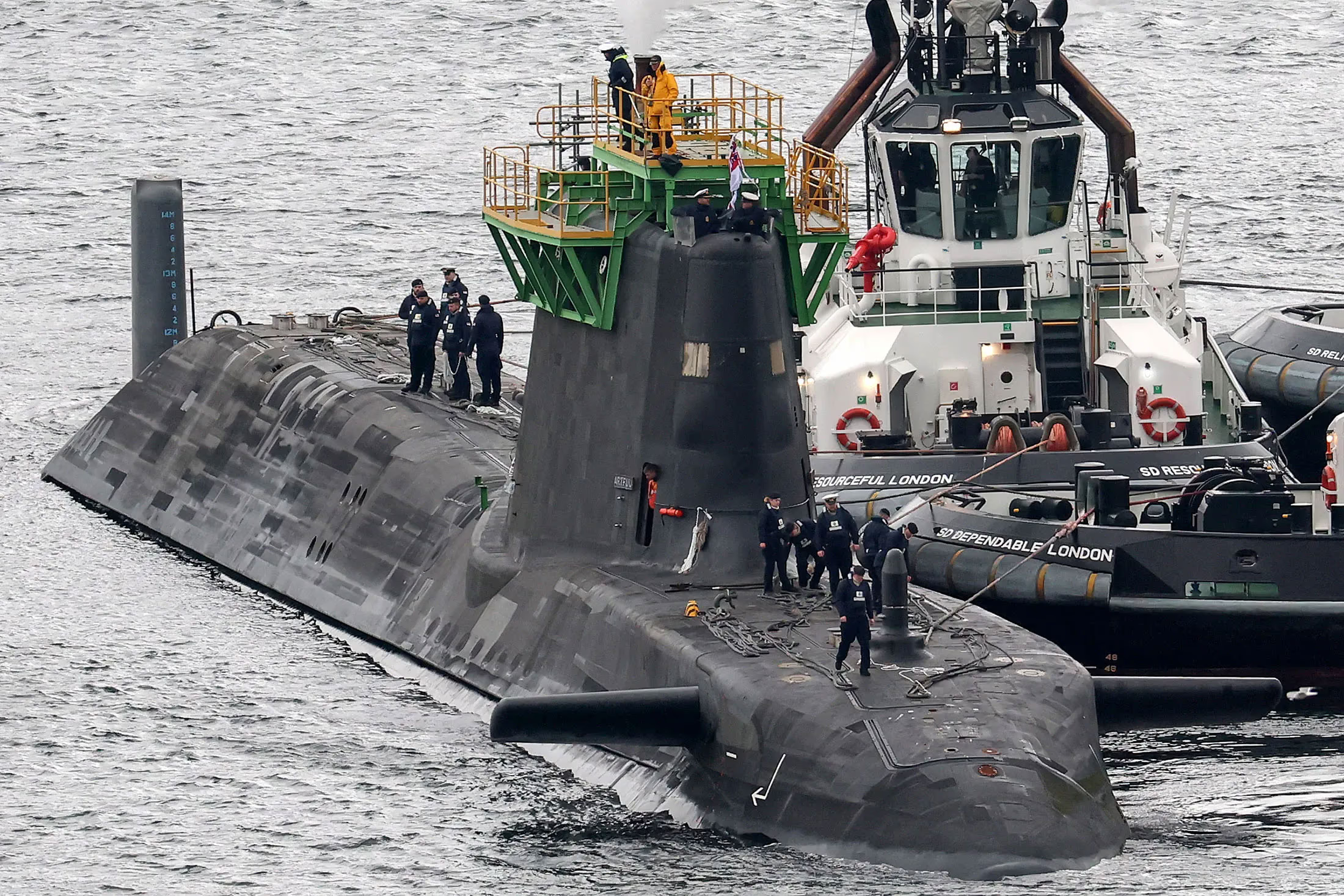Britain is shedding its peacetime inertia and adopting a mobilisation mindset. The new Defence Strategic Review, drawn up by Keir Starmer’s government, calls for massive investment in the nuclear arsenal, submarines and the wider industrial base. The move is not only a response to the growing threat from Russia; it is also an attempt to prepare the country for an era of protracted conflict—against the backdrop of strikes on Kyiv, attacks on Russian airbases and increasing volatility in the global security order.
Keir Starmer’s government plans to invest £15 billion in modernising the UK’s nuclear arsenal and expanding its submarine fleet—strengthening the country’s defence capabilities in response to growing threats from Russia.
According to the Ministry of Defence, the AUKUS programme—a joint initiative with the United States and Australia—will see the construction of up to 12 new nuclear-powered submarines. These will eventually replace the current Astute-class fleet, with deployment expected in the late 2030s.
Defence Secretary John Healey described the upcoming Defence Strategic Review, due to be published on Monday, as a message to Moscow that Britain is determined to stand up to aggression. The document will outline current threats and the measures the UK intends to take.
"We’re seeing a rise in threats, and we must act decisively to deter Russian aggression," Healey said. "Modern submarines in international waters and a sovereign warhead programme will make Britain stronger abroad and more secure at home."
As part of the new strategy, Britain will also build six munitions factories to ensure a steady output of weapons and prepare for long-term conflict. London also plans to procure up to 7,000 long-range missiles, while investing in cybersecurity and replenishing strategic reserves of equipment and supplies.
In an interview with Sky News, Healey said construction of the new facilities would begin "very soon". He emphasised that this is not just about military strength, but also about rebuilding the country’s industrial base.
"This means Britain is ready. We’re reinforcing our armed forces, but also rebuilding the industrial foundation—it's all part of our preparedness for potential armed conflict," he told the BBC.
At the same time, John Healey acknowledged that the goal of raising defence spending to 3% of GDP remains "an ambitious task", and that any increase in army personnel is unlikely to begin before the next parliamentary term. Opposition parties, including the Conservatives and Liberal Democrats, argue that the target should be met well before 2034.
The strategic review, to be unveiled on Monday, comes amid years of underfunding of the defence sector, which has seen the British Army shrink to its smallest size since the Napoleonic Wars.
Abandoning the so-called "peace dividend" places additional strain on the public budget—just as Chancellor Rachel Reeves prepares a multi-tiered review of departmental spending, due on 11 June. Higher defence outlays coincide with mounting fiscal pressures from health care, the prison system, and other sectors.
"All the promises made in Labour’s Strategic Defence Review will be viewed with a degree of scepticism until it’s clear where the money will come from," said James Cartlidge, a Conservative shadow minister.
According to The Sunday Times, the government is also considering purchasing U.S.-made fighter jets capable of carrying tactical nuclear weapons. The strategic review may also recommend measures such as developing missile defence systems and reviving civil defence structures—an equivalent of the World War II-era Home Guard.
The shift toward a mobilisation-oriented defence model coincides with calls by U.S. President Donald Trump for NATO members to increase their military spending. Just weeks after his return to the White House, Keir Starmer announced plans to raise Britain’s defence budget to 2.5% of GDP by 2027—up from the current 2.3%.
Moscow launched one of its most sustained attacks on Kyiv since the start of the war, using drones and missiles. Almost simultaneously, Ukrainian drones struck strategic airbases deep inside Russia. The exchange marked a sharp escalation ahead of the upcoming talks in Istanbul, where representatives from Ukraine, Russia, and the United States will attempt to negotiate the terms of a potential ceasefire.
